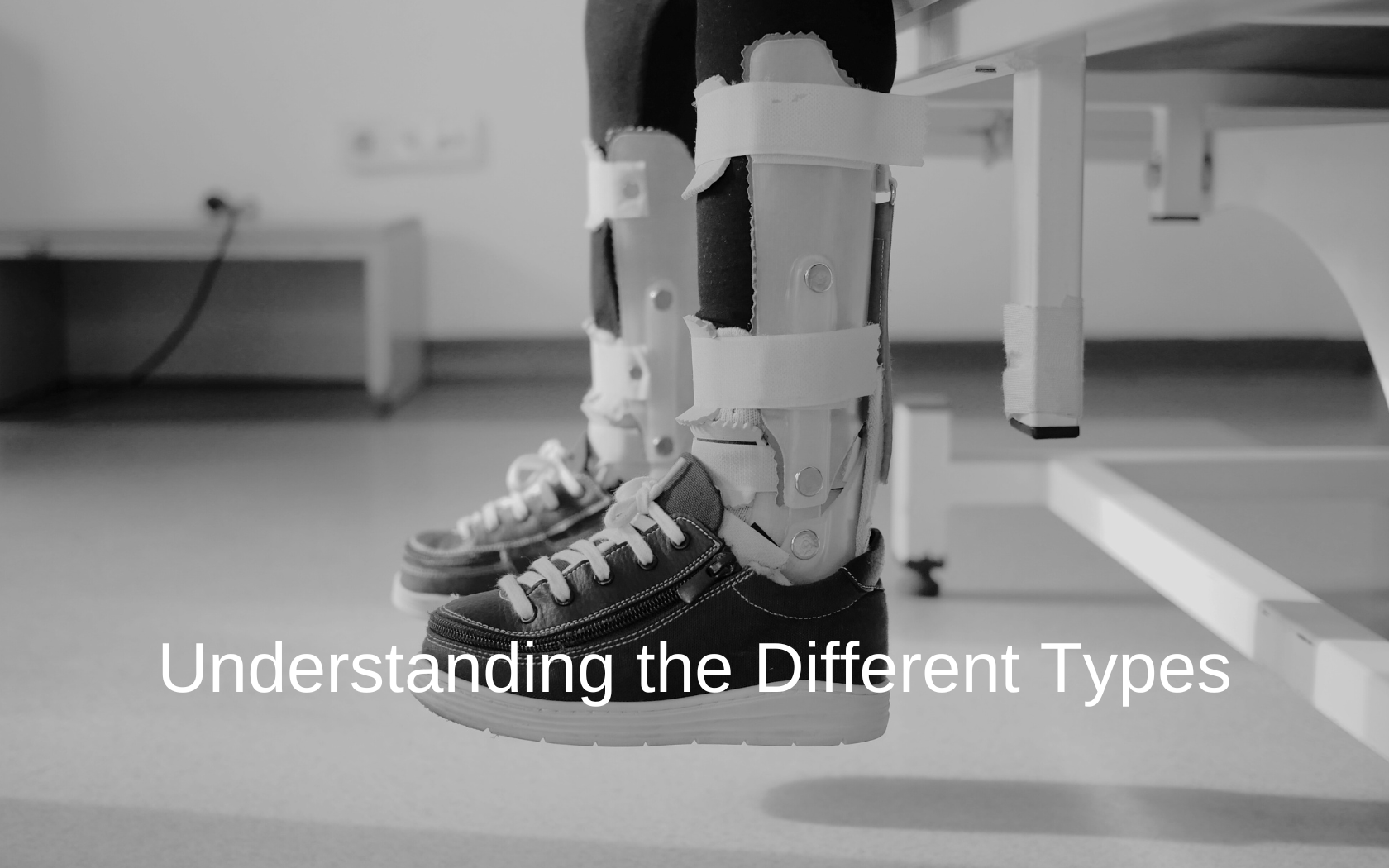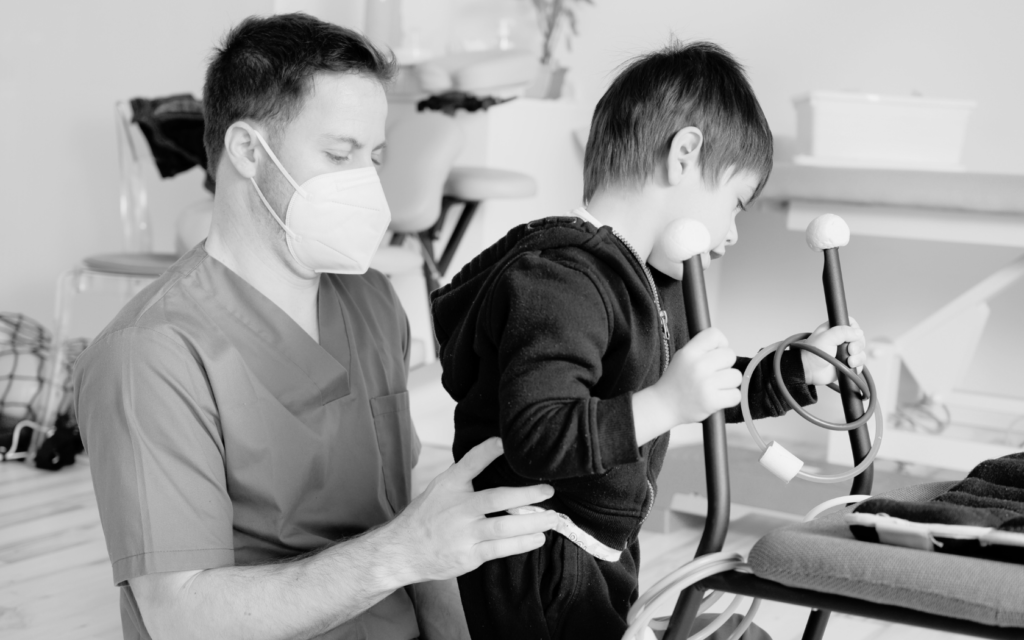With all its types, categories, and subcategories, you might compare cerebral palsy to a set of nesting dolls. There’s the outermost doll—cerebral palsy itself. Inside is one of the five major types of cerebral palsy. That’s followed by a subcategory, and finally, the smallest doll—the unique symptoms and needs of a particular person.
There is a lot of variation within cerebral palsy. And that’s why one person with CP can have very different symptoms from another.

Five Types of Cerebral Palsy
You might have read that cerebral palsy (CP) is a neurological disorder. In reality, it’s a group of neurological disorders. There are actually four main types of CP, plus a fifth type that mixes symptoms of the other four. All the different types of cerebral palsy affect a person’s movement, muscle tone, and posture. But how they affect the body can differ.
The five types of CP are:
- Spastic
- Ataxic
- Athetoid (dyskinetic)
- Hypotonic
- Mixed cerebral palsy.
What makes each type of CP different? Well, the main factor is which part of the brain is damaged. That influences the symptoms a person may have.
As you may know, cerebral palsy results from brain damage that occurs during pregnancy or birth. Oftentimes the cause of CP is a lack of oxygen because of birth complications.
How Common is Each Type of CP?
Spastic cerebral palsy is by far the most common type. Research estimates it accounts for about 77% of all cases. The main symptom of spastic CP is increased muscle tone and stiff, jerky movements. Within this category, spastic diplegia and spastic quadriplegia are the most common subtypes.
Dyskinetic (or athetoid) cerebral palsy, characterized by involuntary movements, constitutes approximately 6-15% of CP cases. Usually, it results from damage to the basal ganglia in the brain.
Mixed cerebral palsy, which involves symptoms of more than one type, accounts for about 10-15% of cases. This type often includes a combination of spasticity and dyskinetic movements.
Ataxic cerebral palsy, which affects balance and coordination, makes up around 2.4-5% of all cases. This form arises from damage to the cerebellum.
The least common type of cerebral palsy is hypotonic CP. Noted for reduced muscle tone and strength, is quite rare. It only occurs in less than 3% of cerebral palsy cases.

Types of Cerebral Palsy Explained
Now let’s delve into the specifics of each type of CP. Here we’ll tell you what distinguishes each variation from the others.
Spastic Cerebral Palsy
In most cases, the cause of spastic CP is damage to the motor cortex. That’s the area of the brain that controls voluntary movements.
Spastic CP can also involve damage to the pyramidal tracts. These are pathways that begin in the motor cortex and travel through the brainstem and spinal cord to communicate signals for muscle control. Damage to them can cause spasticity and increased muscle tone.
People with this type of cerebral palsy usually have increased muscle tone (hypertonia), which leads to stiff and awkward movements.
There are three subcategories within spastic CP:
- Spastic Diplegia (Muscle stiffness in the legs)
- Spastic Hemiplegia (Muscle stiffness on one side of the body)
- Spastic Quadriplegia (Muscle stiffness in all four limbs)
The symptoms of spastic CP can vary, but the most common ones include:
- Stiff muscles that are difficult to move.
- Muscle spasms and jerky movements.
- Permanent shortening of muscles or joints because of severe stiffness.
- Difficulty walking (may walk on toes or walk with legs crossing over each other).
- Problems with tasks that require precise hand movements, such as writing or buttoning clothes.
- Muscle weakness
- Balance and coordination problems
- Speech and swallowing difficulties
Dyskinetic Cerebral Palsy
Dyskinetic cerebral palsy results from damage to the basal ganglia. The basal ganglia are a group of nuclei located deep within the cerebral hemispheres. They play a crucial role in coordinating movement and regulating motor control. Damage to this area can disrupt these functions, causing involuntary movements and muscle tone abnormalities.
Like someone with spastic CP, a person with dyskinetic CP can have difficulty walking and coordinating their movements. But they also have movements they can’t control. These motions can be unpredictable and might increase with stress.
Symptoms may include:
- Dystonia: Muscle contractions that cause twisting and repetitive movements or abnormal postures.
- Athetosis: Slow, writhing movements of the arms and legs.
- Chorea: Irregular, unpredictable movements that can affect the face, limbs, or trunk.
- Speech difficulties
- Drooling and feeding problems
The subcategories of dyskinetic cerebral palsy are choreoathetoid and dystonic CP. The exact diagnosis depends on what type of involuntary movements the person experiences.
Ataxic Cerebral Palsy
The main issue that someone with this type of cerebral palsy may face is poor coordination and balance. This is because ataxic cerebral palsy affects the cerebellum, which is located at the back of the brain, beneath the occipital lobes. It’s the part of the brain responsible for coordinating voluntary movements and maintaining balance and posture.
The symptoms of ataxic cerebral palsy include:
- Difficulty with tasks requiring precise movements, such as writing or buttoning a shirt.
- Unsteady walking, sometimes with a wide gait to compensate for poor balance.
- Tremors (such as a shaky hand when reaching for an object)
- Hypotonia: reduced muscle tone.
- Nystagmus: Rapid, involuntary eye movements that can affect vision.
- Slurred or slowed speech
Hypotonic Cerebral Palsy
Compared to spastic CP, hypotonic cerebral palsy is like a four-leaf clover hidden in a field of three-leaf clovers. It only occurs in less than 3% of cerebral palsy cases.
The symptom that distinguishes hypotonic CP from other types of cerebral palsy is soft, limp, and floppy muscles. The person may even be able to move them beyond their normal range of motion.
With hypotonic CP, the damage in the brain isn’t always in just one area. It might occur in several areas, including the cerebellum, cerebral cortex, and basal ganglia. Symptoms include:
- Muscle floppiness
- Poor muscle control
- Delays in sitting, crawling, and walking
- Difficulties in maintaining posture
- Very flexible joints due to lack of muscle support
- Problems sucking, swallowing, and chewing
- Slow or absent reflexes
- Breathing problems
- Difficulty holding the head up
Mixed Cerebral Palsy
Mixed CP is exactly what its name describes: a mixture of two or more types of cerebral palsy. It occurs when there’s damage to multiple areas of the brain. This leads to a combination of symptoms.
The symptoms of mixed cerebral palsy vary depending on the types of CP involved and their severity. But some combinations, like spastic-dyskinetic CP, are more common than others.
Here are some possible combinations and their symptoms:
- Spastic-Dyskinetic CP: Increased muscle tone and stiffness, plus involuntary movements.
- Spastic-Ataxic CP: Stiffness and jerky movements, plus poor coordination and balance.
- Dyskinetic-Ataxic CP: Involuntary movements, plus problems with balance and coordination.
- Spastic-Hypotonic CP: Muscle stiffness and tightness in the limbs, but low muscle tone and floppiness in the neck and trunk.

Connecting with a CP Birth Injury Lawyer
If your child has any of the various types of cerebral palsy, they need to receive treatment and support. However, paying for treatment can get expensive. If your child’s CP resulted from medical negligence, you’re entitled to sue for the cost of treatment, plus other damages. To find out if you have a case, talk to our expert birth injury lawyers.
Types of Cerebral Palsy FAQ’s
The Gross Motor Function Classification System (GMFCS) classifies how severe a child’s CP is. There are 5 levels of severity, where 1 is the mildest, and 5 is the most severe.
People with the mildest form of CP will have a classification of “GMFCS level 1”. They can walk and handle daily activities without any help. Sometimes they aren’t diagnosed with cerebral palsy for many years, because they don’t have many noticeable symptoms. Any type of CP (spastic, ataxic, and others) can be classified as GMFCS level 1.
GMFCS level 2 is also considered “mild cerebral palsy”. People with this level walk with limitations, but don’t need any assistive devices.
The most common form of cerebral palsy is spastic cerebral palsy. It accounts for about 70-80% of cases. Symptoms can vary, but most people with this type of CP have stiff, difficult-to-move muscles. They might use a distinct walking pattern, such as scissor gait (legs crossing in a scissor-like motion) or toe-walking (walking on the toes).
Within spastic cerebral palsy, there are 3 subtypes: spastic diplegia (affects the legs) , spastic hemiplegia (affects one side of the body), and spastic quadriplegia (affects all four limbs). Spastic diplegia and spastic hemiplegia are more common than spastic quadriplegia.
Ataxic cerebral palsy is considered the most rare type of CP because it makes up only about 2.4-5% of all cases. However, some sources consider hypotonic cerebral palsy the most rare, since it accounts for about 3% of cases.
The exact percentage of cases is hard to determine, especially because some children have more than one type of CP. So sources differ on which type is the rarest.
Spastic quadriplegia is the type of CP that usually has the worst prognosis. This is because it affects all four limbs. People with this type often have a hard time moving their arms and legs. They might also have trouble breathing and swallowing. Spastic quadriplegia can also cause other problems like learning difficulties, seizures, and vision or hearing problems.




